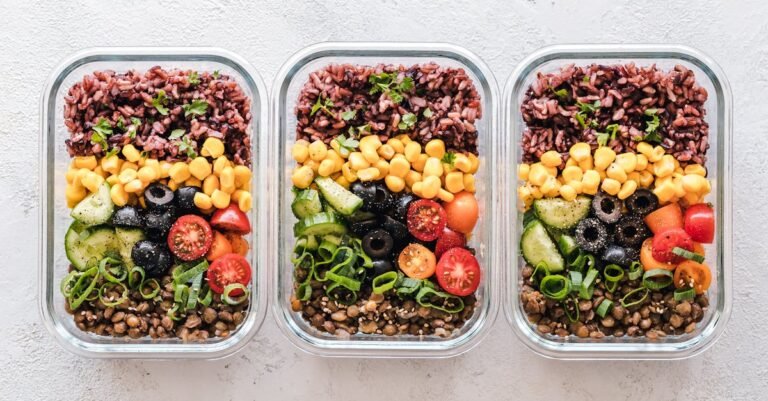Table of Contents
- Mindful Eating Habits For Weight Management: Your Path to a Healthier Relationship with Food
- Introduction: Ditching Diets and Discovering Mindful Eating
- What Exactly Is Mindful Eating? (Hint: It’s Not Another Diet!)
- Why Does Mindful Eating Work for Weight Management?
- Getting Started: Practical Steps to Cultivate Mindful Eating Habits
- Simple Mindful Eating Exercises to Try Today
- Mindful Eating Isn’t About Perfection: Overcoming Challenges
- Mindful Eating vs. Traditional Dieting: A Healthier Approach?
- Beyond the Scale: The Amazing Long Term Benefits of Mindful Eating
- Conclusion: Your Journey to Mindful Eating and Sustainable Weight Management
- Frequently Asked Questions (FAQs)
Mindful Eating Habits For Weight Management: Your Path to a Healthier Relationship with Food
Introduction: Ditching Diets and Discovering Mindful Eating
Let’s be honest, how many diets have you tried? Low carb, high fat, points systems, shakes, cleanses… the list probably goes on, right? We often jump from one restrictive plan to another, hoping for that magic bullet for weight management. But what if I told you there’s a different approach? One that doesn’t involve counting every calorie or banning entire food groups? An approach that focuses not just on what you eat, but how you eat? Welcome to the world of mindful eating!
It might sound a bit ‘woo woo’ at first, but stick with me. Mindful eating isn’t about deprivation; it’s about awareness. It’s about reconnecting with your body’s natural signals of hunger and fullness, savouring your food, and understanding the emotional triggers that might lead you to the pantry. Think of it less as a diet and more as a skill – a way to cultivate a healthier, happier, and more sustainable relationship with food, which, surprise surprise, often leads to better weight management without the constant struggle.
What Exactly Is Mindful Eating? (Hint: It’s Not Another Diet!)
So, what’s the secret sauce? Mindful eating is essentially applying mindfulness – the practice of paying attention to the present moment without judgment – to the entire experience of eating. It’s about bringing your full awareness to the process, from noticing your hunger pangs to choosing your food, preparing it, smelling it, tasting it, and recognizing when you’re satisfied. It’s the polar opposite of shovelling down lunch while scrolling through your phone or grabbing handfuls of chips while watching TV.
Mindless Eating: The Autopilot Trap
We’ve all been there. You sit down with a bag of crisps or a tub of ice cream in front of the television, and before you know it, it’s gone. You barely remember tasting it, let alone feeling full. That’s mindless eating. It’s eating driven by external cues (like the clock striking noon, the sight of a tempting advert, or social situations) or emotional states (stress, boredom, sadness) rather than actual physical hunger. You’re on autopilot, often consuming far more than your body needs because you simply aren’t paying attention. It’s like driving home and suddenly realizing you don’t remember the journey – your body went through the motions, but your mind was elsewhere.
Mindful Eating: Bringing Awareness to Your Plate
Mindful eating flips the script. It encourages you to intentionally focus on your food and the physical sensations associated with eating. It involves asking yourself: Am I truly hungry? What does my body *really* need right now? What does this food look, smell, taste, and feel like? How does my body feel as I eat? Am I starting to feel full? It’s about being an active participant in your meal, not just a passive consumer. It transforms eating from an automatic behaviour into a conscious choice and a potentially pleasurable experience.
Why Does Mindful Eating Work for Weight Management?
Okay, sounds nice, but how does simply paying attention help with managing weight? It seems almost too simple, right? Well, the magic lies in how it reconnects you with your body’s innate intelligence and addresses the root causes of overeating that diets often ignore.
Tuning Into Your Body’s Wisdom: Hunger and Fullness Cues
Your body is incredibly smart! It has built in mechanisms to tell you when it needs fuel (hunger) and when it’s had enough (satiety or fullness). The problem? Years of dieting, rushing through meals, and emotional eating can dull our sensitivity to these signals. We learn to ignore subtle hunger cues until we’re ravenous (leading to overeating) or eat past fullness because the plate isn’t empty or because “it’s time” to eat. Mindful eating helps you relearn this language. By pausing and checking in, you start to differentiate between gentle hunger, ravenous hunger, and mere cravings. You also become more attuned to the subtle signs of satisfaction, allowing you to stop eating when you’re comfortably full, not painfully stuffed.
The Brain Gut Connection: How Awareness Impacts Digestion and Satiety
Did you know it takes about 20 minutes for your stomach to send the “I’m full” signal to your brain? When you eat mindlessly and quickly, you can easily consume a large amount of food before your brain even registers satiety. Slowing down, a key component of mindful eating, gives your brain time to catch up with your stomach. Furthermore, paying attention to your food enhances the sensory experience, which can actually increase feelings of satisfaction with smaller amounts. Chewing thoroughly also aids digestion and nutrient absorption, contributing to overall well being and potentially influencing hormonal signals related to hunger and fullness, like leptin and ghrelin.
Taming the Emotional Eating Beast
How often do you reach for food when you’re stressed, bored, lonely, or anxious? Emotional eating is using food to soothe or suppress feelings, rather than to satisfy physical hunger. It’s a common pattern, and often involves high calorie, low nutrient comfort foods. Mindful eating encourages you to pause before you eat and ask, “Am I physically hungry, or am I trying to feed an emotion?” By bringing awareness to this pattern, you can start to identify your triggers and find healthier ways to cope with your emotions that don’t involve food. It’s not about never eating for comfort, but about doing it consciously and understanding *why* you’re doing it.
Getting Started: Practical Steps to Cultivate Mindful Eating Habits
Ready to give it a try? Remember, mindful eating is a practice, not a perfect performance. Start small and be patient with yourself. Here are some practical steps to get you going:
Step 1: Create a Mindful Eating Environment
Where you eat matters almost as much as what you eat when you’re trying to be mindful. Setting the stage can make a huge difference.
Ditch the Distractions
This is perhaps the most crucial step. Turn off the TV, put away your phone, close the laptop, and step away from your work desk. Eating while distracted is the hallmark of mindless eating. Aim to eat in a calm, quiet space where you can focus solely on your meal.
Set the Table (Even for One!)
You don’t need fancy china, but sitting down at a table, using proper utensils, and maybe even putting your food on a nice plate can signal to your brain that this is a dedicated eating time. It elevates the experience from a mere refuelling stop to a more intentional act.
Step 2: Check In With Your Body Before You Eat
Before you take that first bite, pause. Take a deep breath. Ask yourself: On a scale of 1 (starving) to 10 (uncomfortably stuffed), how hungry am I? What physical sensations tell me I’m hungry? Is it a stomach growl, low energy, slight headache? Acknowledging your hunger level helps you choose appropriate portion sizes and tune into your body’s needs.
Step 3: Engage All Your Senses
Food is a sensory experience! Take a moment to truly *look* at your food – notice the colours, shapes, textures. Smell it – what aromas do you detect? As you eat, pay attention to the taste (is it sweet, salty, sour, bitter, umami?), the texture (crunchy, smooth, chewy?), and even the sounds your food makes as you chew. Engaging all your senses grounds you in the present moment and significantly enhances your enjoyment and satisfaction.
Step 4: Slow Down, Savour, and Chew!
Put your fork down between bites. Seriously, try it! Chew your food thoroughly – aim for 20 30 chews per mouthful if you can. This not only helps with digestion but also forces you to slow down the pace of your eating. Savour each mouthful. Notice the flavours unfolding. Rushing through meals is a fast track to overeating because, as we mentioned, your brain needs time to register fullness.
Step 5: Recognize When You’re Actually Full
Just as you checked in with your hunger before eating, check in periodically *during* the meal. How is your hunger level changing? Are you starting to feel comfortably satisfied? Fullness isn’t about feeling stuffed or needing to unbutton your pants. It’s a more subtle sensation of contentment and having had enough. Aim to stop eating when you feel about 80% full – satisfied, but not overly full. It takes practice to recognize this point, especially if you’re used to cleaning your plate regardless of how you feel.
Step 6: Explore Your Food Story and Emotional Triggers
Mindful eating also involves understanding your relationship with food on a deeper level. What are your eating habits rooted in? Are certain foods tied to specific memories or emotions? When do you tend to eat mindlessly? Keeping a simple journal for a week or two, noting when, what, and why you eat, and how you feel before and after, can reveal powerful insights into your patterns and triggers. This awareness is the first step towards changing unhelpful habits.
Simple Mindful Eating Exercises to Try Today
Need some concrete ways to practice? Here are a few simple exercises:
The Famous Raisin Exercise (A Mini Mindful Moment)
This classic mindfulness exercise perfectly illustrates the principles. Take a single raisin (or a small piece of chocolate, a nut, a grape – anything small).
- See: Examine it closely as if you’ve never seen one before. Notice its texture, colour variations, wrinkles.
- Touch: Roll it between your fingers. Feel its weight and texture.
- Smell: Bring it close to your nose and inhale deeply. What scents do you notice?
- Place: Put it in your mouth but don’t chew yet. Notice how it feels on your tongue.
- Taste: Start chewing very slowly. Notice the initial burst of flavour, how the texture changes, how the taste evolves.
- Swallow: Pay attention to the sensation of swallowing and the lingering taste.
- Reflect: How did that compare to normally eating a raisin?
This exercise, though simple, highlights how much we miss when we eat on autopilot.
Mindful Meal Preparation: Cooking with Awareness
Mindfulness doesn’t have to start only when the food hits the plate. Bring awareness to the process of cooking. Pay attention to the colours and textures of the vegetables as you chop them. Listen to the sizzle of onions in the pan. Smell the spices as you add them. Engaging with your food during preparation can deepen your appreciation for the meal and make the eating experience itself more mindful.
Tackling Snacks Mindfully
Snacking is often a prime time for mindless eating. Before grabbing a snack, pause and ask the key questions: Am I truly hungry? What does my body need? If you decide to snack, portion it out (don’t eat directly from the bag or container!), sit down without distractions, and apply the same mindful principles as you would to a full meal. Savour it, enjoy it, and notice when you’ve had enough.
Mindful Eating Isn’t About Perfection: Overcoming Challenges
Let’s be real: incorporating mindful eating into a busy life isn’t always easy. You might feel self conscious eating slowly in front of others, struggle to find distraction free time, or simply forget in the moment. That’s okay!
- Time Constraints: If you only have 10 minutes for lunch, dedicate those 10 minutes fully to eating. Even a few mindful bites are better than none. Start by practicing with just one meal or snack per day.
- Social Situations: You don’t need to make a big show of mindful eating. Simply try to slow your pace slightly, put your fork down occasionally, and tune into your body’s signals as best you can amidst the conversation.
- Forgetting: It happens! When you notice you’ve slipped into mindless eating, gently bring your awareness back to the present moment, back to your food, without judgment. Every moment is a new opportunity to be mindful.
- Guilt or Judgment: Mindful eating is about awareness, not restriction or judgment. If you eat past fullness or choose a less nutritious food, simply notice it without beating yourself up. Observe the experience and learn from it for next time.
Remember, it’s a practice, a journey, not a destination. Progress over perfection is the name of the game.
Mindful Eating vs. Traditional Dieting: A Healthier Approach?
How does mindful eating stack up against the traditional dieting rollercoaster? While diets focus on external rules – what to eat, when to eat, how much to eat – mindful eating focuses on internal cues. Diets often create a sense of deprivation and can lead to a cycle of restriction followed by overeating or bingeing. They can label foods as “good” or “bad,” fostering guilt and anxiety around eating.
Mindful eating, on the other hand, promotes body trust and food freedom. No foods are inherently off limits. Instead, the focus is on awareness, satisfaction, and honouring your body’s needs. By learning to listen to your internal signals, you naturally gravitate towards choices that nourish you and regulate your intake without rigid rules. This often leads to more sustainable weight management because it addresses the underlying behaviours and mindset around food, rather than just imposing temporary restrictions. It fosters a positive relationship with food, reducing stress and anxiety around eating.
Beyond the Scale: The Amazing Long Term Benefits of Mindful Eating
While weight management is often a key motivator for exploring mindful eating, the benefits extend far beyond the number on the scale. Cultivating this practice can lead to:
- Improved Digestion: Slowing down and chewing thoroughly aids the digestive process, potentially reducing issues like bloating, gas, and indigestion.
- Increased Enjoyment of Food: By truly savouring each bite, you enhance the pleasure derived from eating, often feeling more satisfied with less food.
- Better Stress Management: The pause and awareness inherent in mindful eating can be a form of mini meditation, helping to reduce overall stress levels.
- Reduced Binge Eating and Emotional Eating: By understanding triggers and learning to differentiate physical from emotional hunger, you gain tools to manage these patterns.
- Greater Body Awareness and Acceptance: Tuning into your body’s signals fosters a deeper connection and appreciation for your body, regardless of its size or shape.
- A Healthier Relationship with Food: Moving away from guilt and restriction towards awareness and enjoyment can fundamentally change how you view and interact with food for the better.
It’s about creating a sustainable lifestyle change that benefits your physical and mental well being in numerous ways.
Conclusion: Your Journey to Mindful Eating and Sustainable Weight Management
Embarking on a mindful eating journey is less about following strict rules and more about cultivating a new awareness, a kinder approach to yourself and your food. It’s about ditching the quick fix mentality of dieting and embracing a sustainable practice that honours your body’s wisdom. By learning to slow down, tune in, savour the experience, and understand your unique patterns, you empower yourself to make conscious choices that support not only weight management but also overall well being.
It won’t happen overnight, and there will be moments of mindlessness – that’s part of being human! The key is gentle persistence and self compassion. Start small, celebrate the moments of awareness, and trust the process. You have the innate ability to nourish yourself appropriately; mindful eating simply helps you rediscover and listen to that inner guide. So, take a breath, prepare your next meal with intention, and truly taste the journey towards a healthier, more mindful you.
Frequently Asked Questions (FAQs)
1. Is mindful eating just about eating slowly?
While eating slowly is a key component, mindful eating is much broader. It involves paying attention to your hunger and fullness cues, engaging all your senses, removing distractions, understanding emotional triggers, and appreciating your food. Slowing down helps facilitate these other aspects, but it’s just one piece of the puzzle.
2. Can I still eat my favorite ‘unhealthy’ foods with mindful eating?
Absolutely! Mindful eating isn’t about restricting foods. It’s about awareness. You might find that when you eat treat foods mindfully – slowly, savouring each bite without distraction – you feel satisfied with a smaller portion than you would if you ate them mindlessly. It’s about conscious choice and enjoyment, not deprivation.
3. How long does it take to see weight management results with mindful eating?
Mindful eating isn’t a quick fix diet, so results vary greatly. Some people notice changes in their eating patterns and weight relatively quickly as they become more attuned to fullness cues. For others, it’s a more gradual process focused on changing their relationship with food first. The focus should be on cultivating the practice rather than solely on the scale, as the sustainable habits built are the true goal.
4. What if I live with others who don’t practice mindful eating?
You can still practice mindful eating even if others around you aren’t. Focus on your own plate and experience. Put your fork down between bites, chew thoroughly, and check in with your own body. You don’t need to draw attention to it. Leading by example might even inspire curiosity in others over time!
5. Do I need to meditate to practice mindful eating?
While mindful eating stems from mindfulness principles often practiced in meditation, you don’t need a formal meditation practice to do it. The ‘meditation’ happens right there at the table – focusing your attention on the sensory experience of eating and your body’s signals is the practice itself. However, a general mindfulness or meditation practice can certainly complement and strengthen your ability to eat mindfully.










